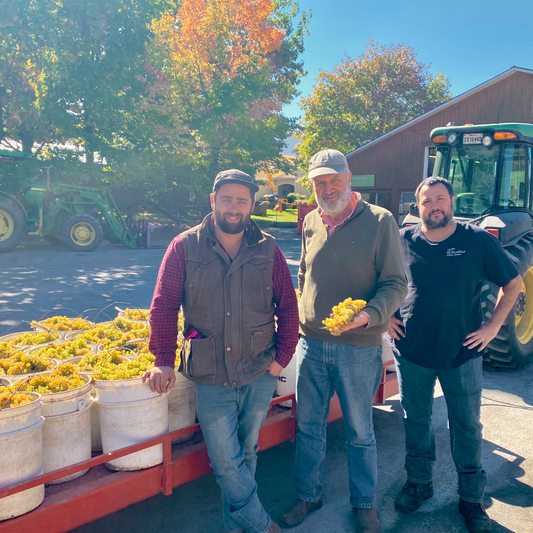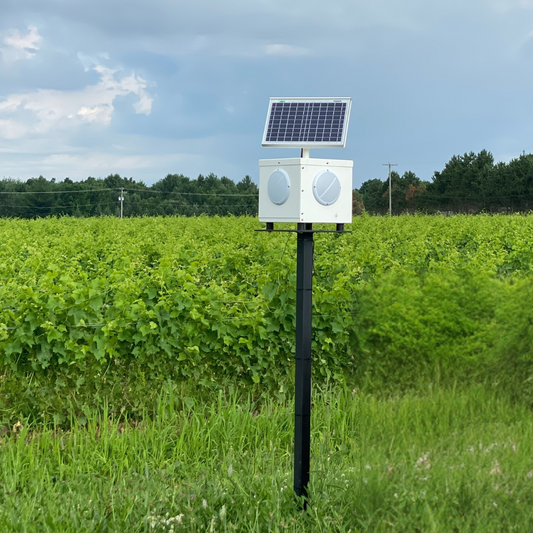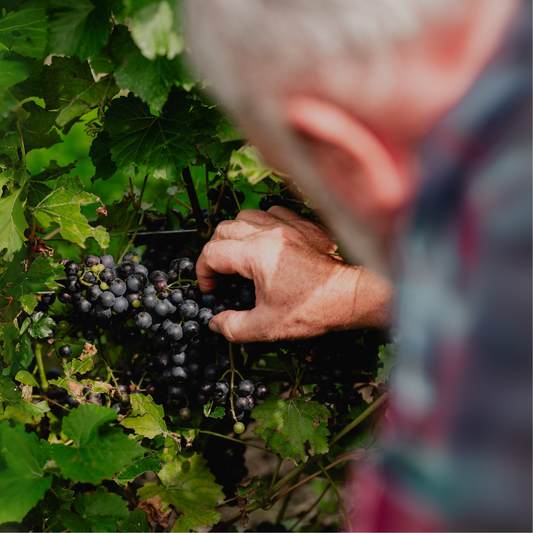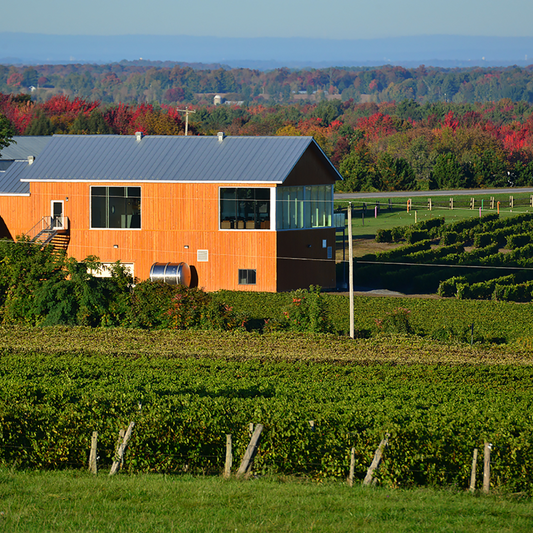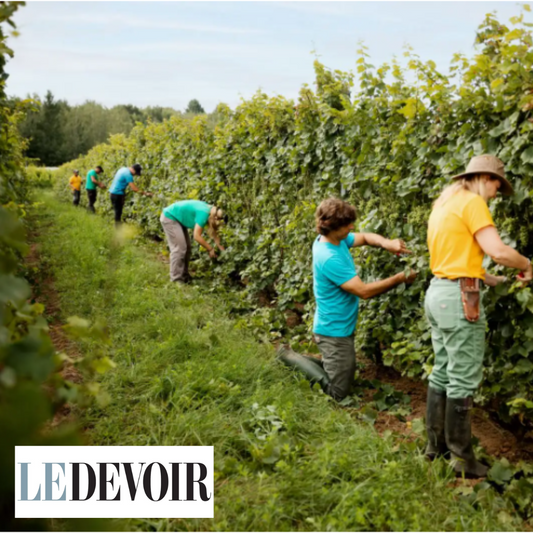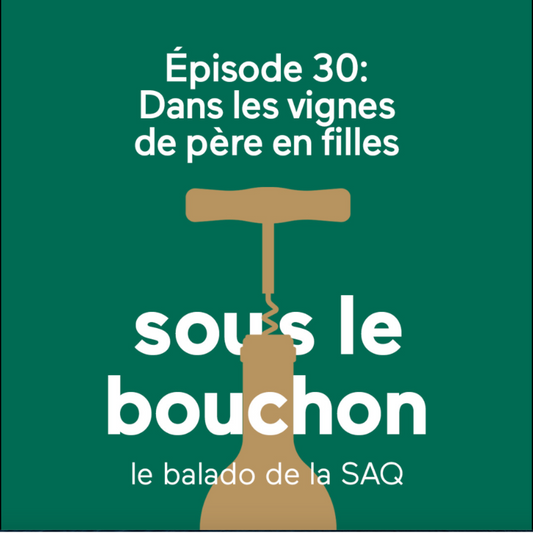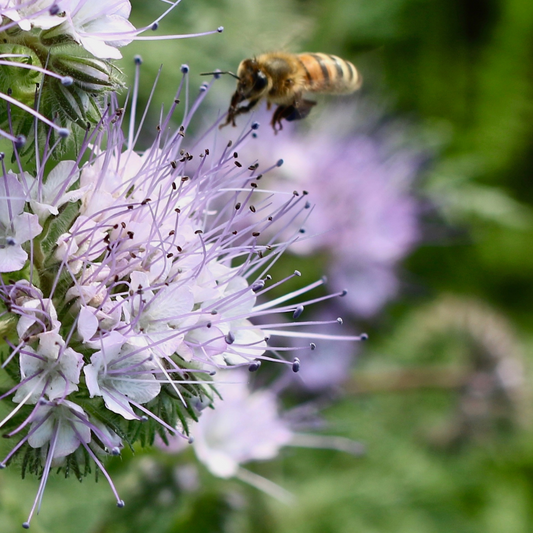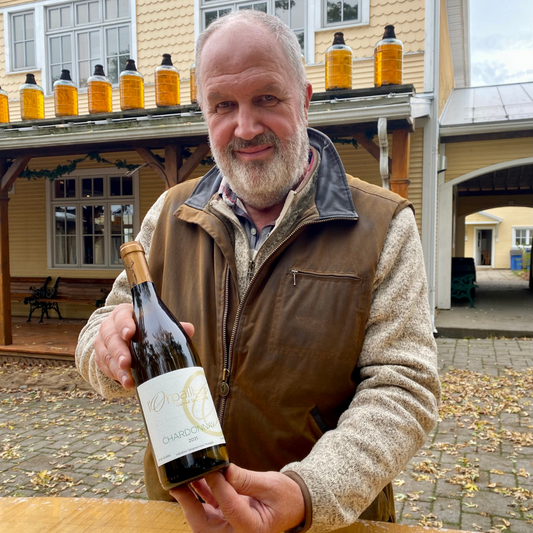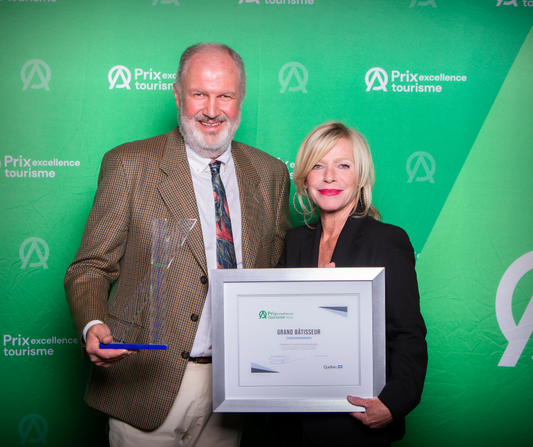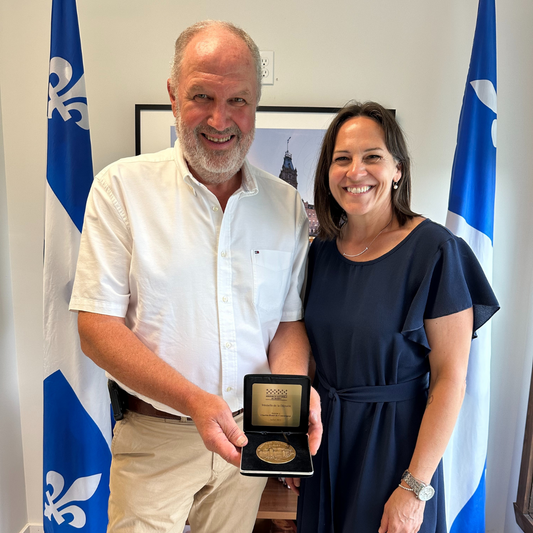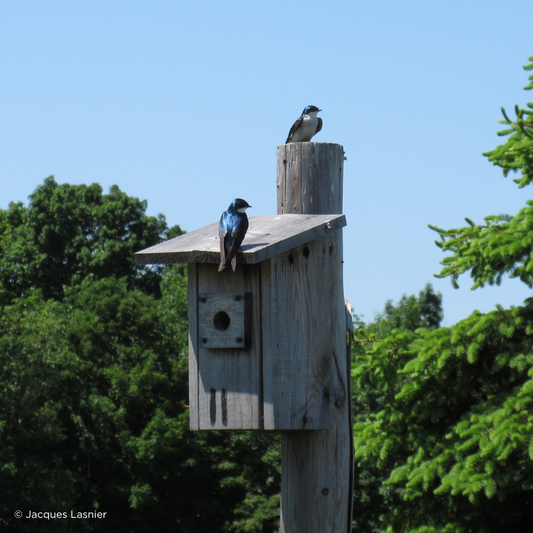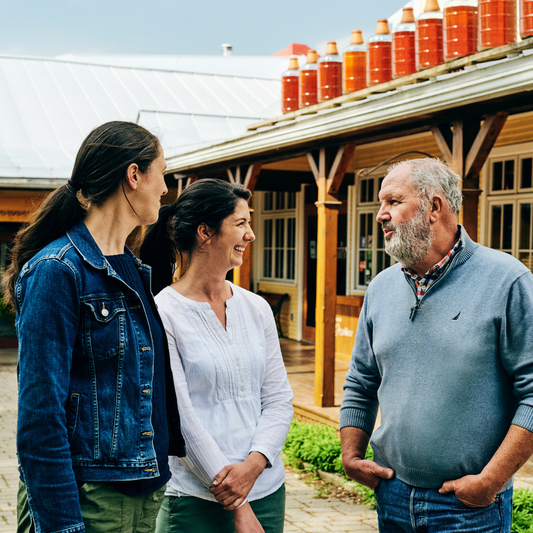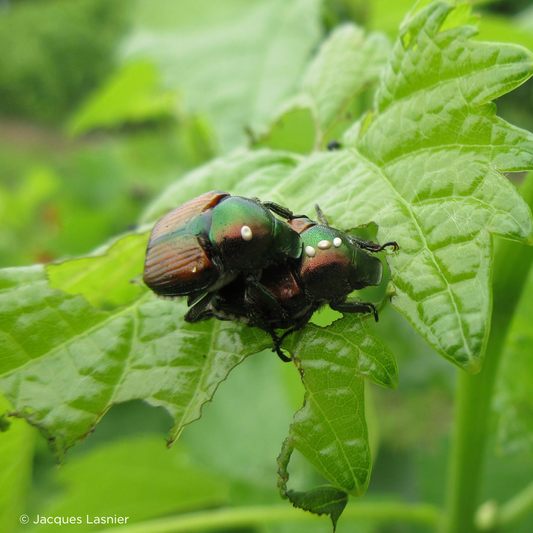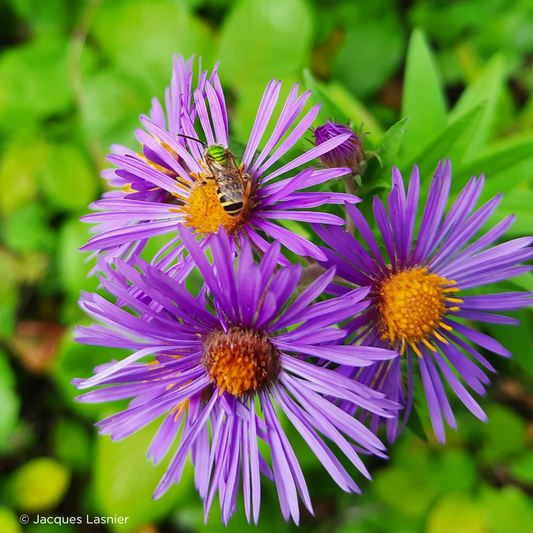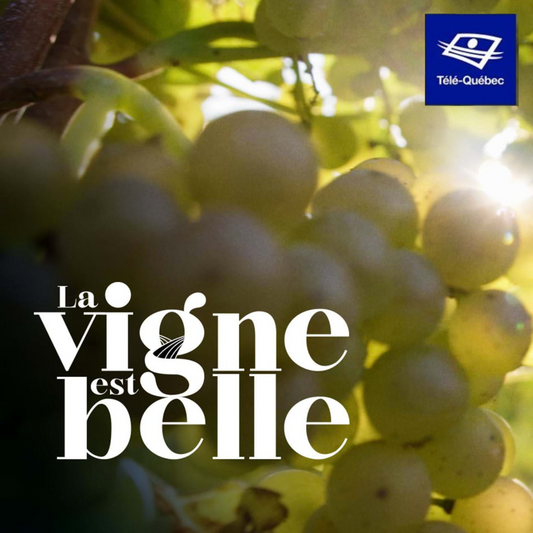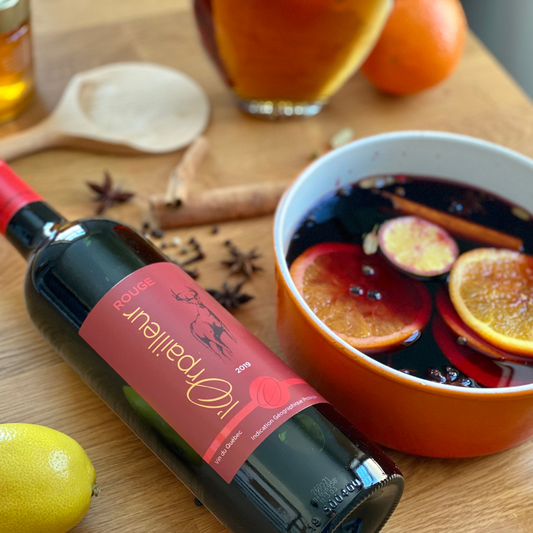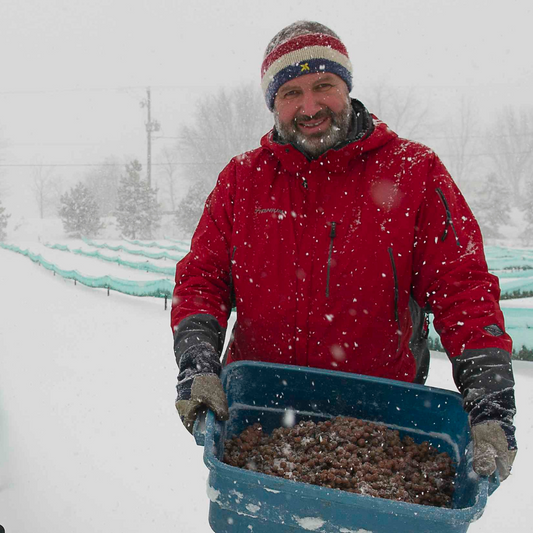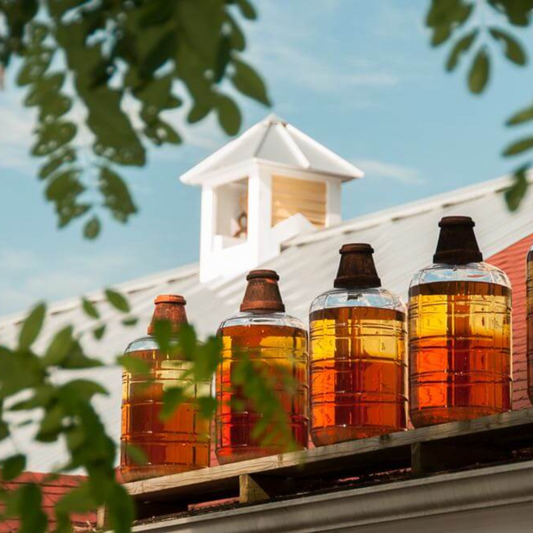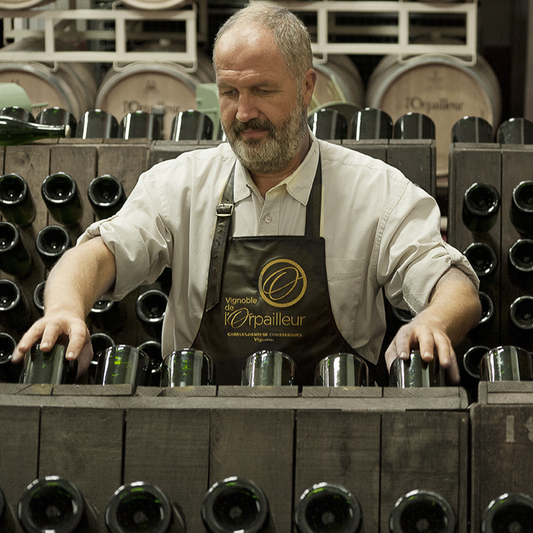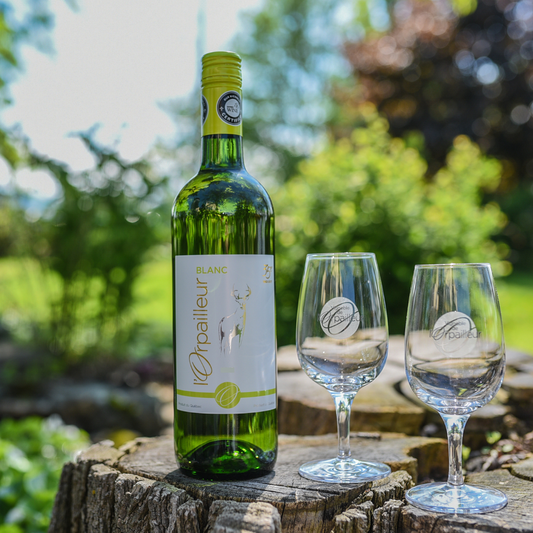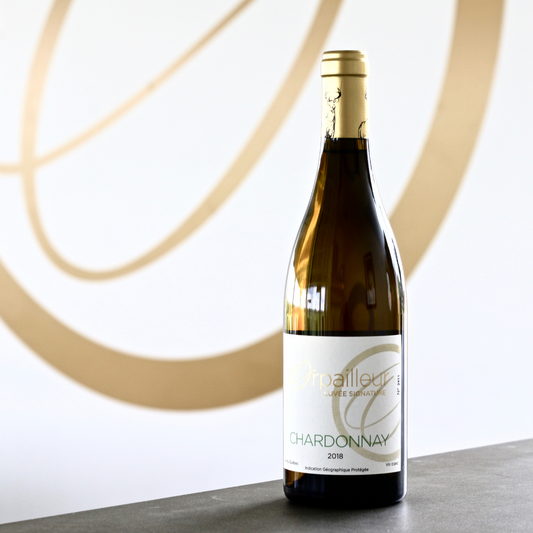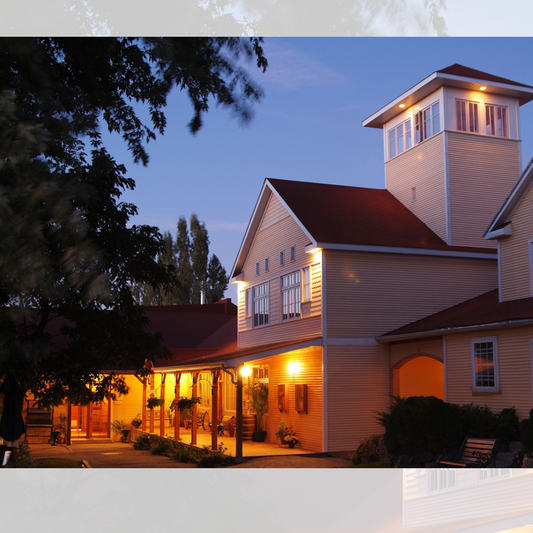The numerous studies , carried out since 1997, which began with the inventory of Arthropods (insects, mites and spiders), have enabled us to identify the pests and their natural enemies (predators and parasites) present at the Vignoble de l'Orpailleur.
NATURAL INSECT MANAGEMENT
We have thus identified beneficial insects and are committed to preserving them, because they feed on insects that damage the vine. Over the years, by favoring the strategy of conservation and increase of these useful insects, we have managed to achieve a natural balance in the vineyard. We do not apply any insecticides to the grapes through this program.

PEST ARTHROPODS: these are so-called "harmful" insects such as the tarnished plant bug or leafhoppers, because they cause significant damage to the vine by attacking roots, buds, leaves and/or fruit, for example.

An arthropod pest, the tarnished plant bug on a developing bunch of grapes.
THEIR NATURAL ENEMIES: these are insects that we call "useful" such as spiders, predatory mites, and predatory or parasitoid insects that naturally feed on arthropod pests.


Arachnida and an Asilid robber fly which are both beneficial insects.
THE ATTRACTIVENESS OF USEFUL INSECTS FOR FLOWERS
All these studies have allowed us to better understand our biodiversity, including the wild flowers present in the environment of the Vineyard. They are important feeding sites and indispensable refuges for beneficial insects, mites and spiders which ensure the natural repression of insect pests. These plants also serve as a refuge for them in the fall as an overwintering site.
Maintaining numerous floral strips around the Vineyard and the plots of vines allows us to attract beneficial insects and native pollinators and to promote their development in a sustainable manner.

One of our wildflower strips near nesting boxes that host tree swallows and bluebirds.
COVER CROPS BETWEEN THE ROWS OF VINES
Our different cover crops between the rows of vines allow us to offer additional floral resources that provide pollen and nectar to beneficial insects.


A Phacelia flower with a bee, a pollinating insect.
The Phacelia that we use as a cover crop is very beautiful and also very useful! With its periwinkle blue and long stamens, it is a bee plant that not only attracts bees and bumblebees, but also hoverflies that prey on aphids. Its great strengths, in addition to its beauty: its ability to cover the ground, eliminate weeds and resist drought.
SOME USEFUL INSECTS IN THE VINEYARD

A hoverfly of the eristalis family which is a predator of leafhoppers and aphids in particular.

The "helpful" predatory mite Anystis baccarum which feeds on a leafhopper nymph is an insect pest of the vine.

A ladybug predating a colony of aphids, they are precious allies of our reasoned culture.
|
THE FRUITS OF OUR 25 YEARS OF RESEARCH AND DEVELOPMENT WITH AG-CORD AND CHARLES VINCENT. Ag-cord inc. is an independent research institute incorporated since 1996. Jacques Lasnier is the sole shareholder – founder. Co-Lab R&D is the division of Ag-cord inc. which generates scientific research and experimental development. Their expertise is the development of alternative methods to the use of pesticides. The use of natural enemies, the development of biological control agents and the integrated control of crop enemies are their main fields of study. Charles Vincent worked from 1983 to August 2021 as a researcher in agricultural entomology for Agriculture and Agri-Food Canada's Horticultural Research and Development Center in Saint-Jean-sur-Richelieu, Qc. In this capacity, he collaborated for 25 years with Orpailleur and Co-Lab R&D. He is currently a scientific consultant, particularly in the writing of popular texts on agriculture, and in the production of podcasts related to agriculture and the environment.
|





